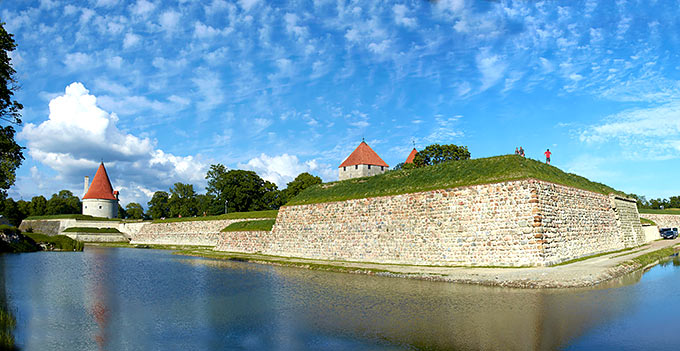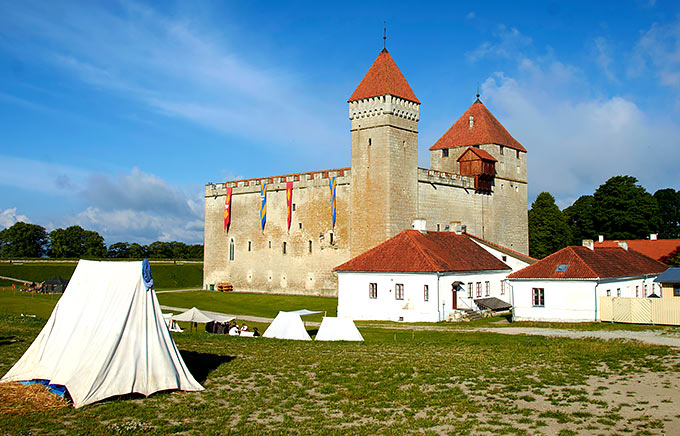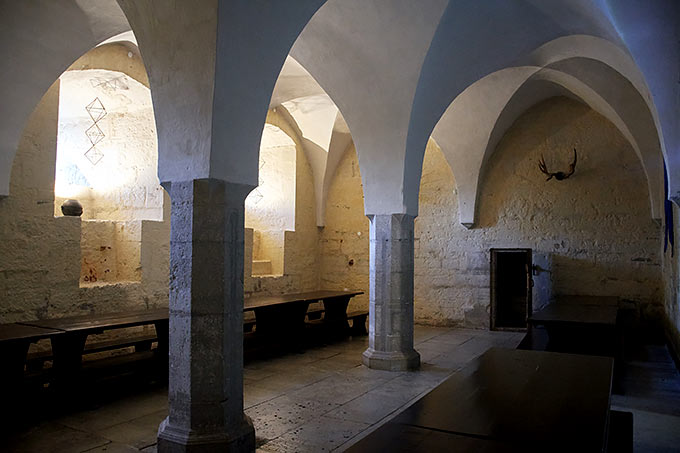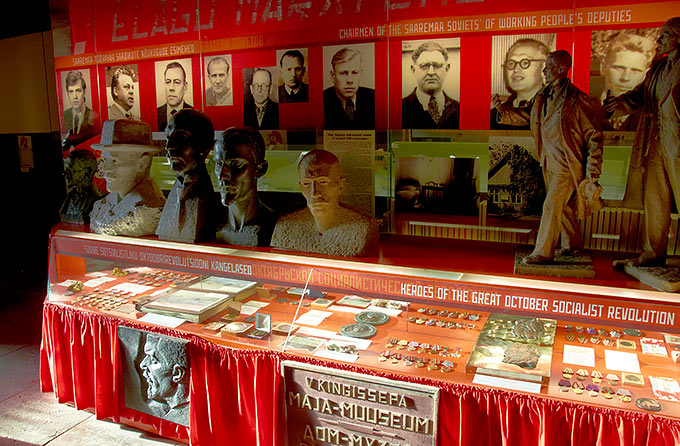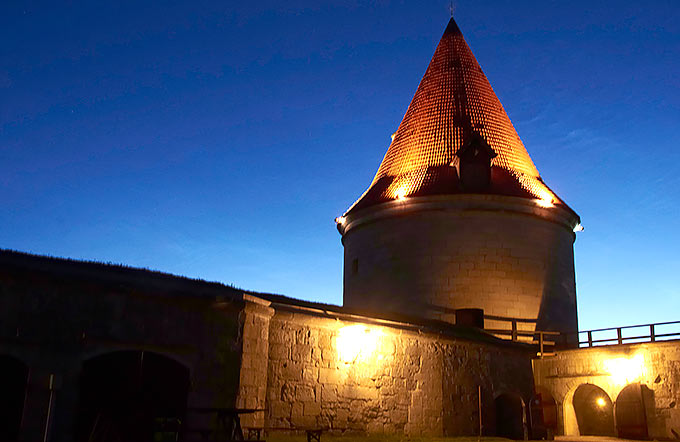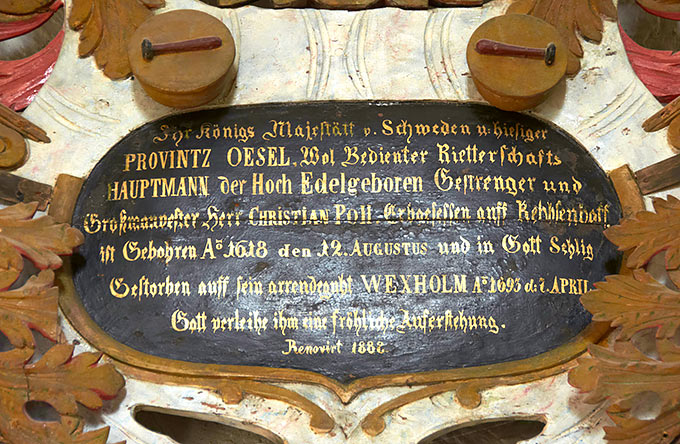Arensburg Fortress history
Saaremaa ... The old Scandinavian sagas tells about Eysysla (German name Ezel) or "Isle land", where dashing people live or "Eastern Vikings". It is better not to stick to them, they have their own fleet of dozens of vessels, they are robbing settlements on the southern shores of the Baltic Sea and even in Sweden itself, they are taxed Christian traders passing by, they are pagan faith themselves. Sometimes they even beat Scandinavian Vikings, Teutons, Saxons, Frisians, Livs tried to conquer them, the Danish King Waldemar II in 1206 tried to establish himself on the island - it did not work out. The largest island of the archipelago was called in those poetic times Kuressaare or "Island of Storks".
Finally, in 1227, the crusaders of the Order of Sword-bearers (from 1237 known as the Livonian Order) completed the conquest of Estland by seizing the "Island Land", establishing the Ezel-Wicks bishopric there. Then, on the largest island of the archipelago of the present Saaremaa, they began the construction of the first stone fortress - the bishop's castle Arensburg (German - "Eagle Castle") on the southern shore of the island near an old trading harbor. Construction was started with a powerful residential tower Sturvolt ("Wolf Tower") 29 meters high with a roomy basement, living rooms with fireplaces, warm toilets and a viewing platform. Then a rectangle measuring 67x86 m was surrounded by a protective wall with a thickness of 2-2.4 meters. With this strong fortress, it was possible to plant Christian faith more or less safely in the archipelago.
In the 1330s the original fortifications were dismantled and the construction of a powerful square building of the Convent House (the Latin conventus - assembly) with the tower-donzhon Sturvot in its northern corner began. The construction was going slow for the time being, until the folk "Uprising of the St. George's Night" in 1343-45, when the local population threw all missioners out from the Ezel archipelago for a year and a half. After suppression of rebellion, within 20 years the construction was going on at a quick pace, as a result of which the castle got its present appearance.
In the 1430s the old defensive wall was dismantled, and a new one was built at a greater distance from the castle. The new wall had a length of more than 600 meters and was reinforced with large towers with diameter up to 15 m. and small towers with diameter up to 6 m. These were two-story semi-towers, for flanking the walls of the fortress with firearms. Additional protection was provided by a wide moat with seawater. In 1559, after the defeat of the Livonian order by the Russians, the last bishop Johann von Munchgausen sold Ezel together with the fortress and the castle to the Danish king Frederick II, and from him it got into the hands of his brother duke Magnus.
The widespread use of siege artillery in the early 17th century dictated a new approach to defensive construction. Apparently, the rebuilding of the fortress Arensburg began at the same time, although there is no historical knowledge about the beginning of the construction and what was actually built there at that time. It is known, however, that in 1562, under the Duke of Magnus, works were carried out in the fortress on the modernization of earth fortifications. So it can be assumed that in 1600 the castle was surrounded by an earthen bastion front, which in general had the shape of the present fortress.
In 1563, during the Livonian War, Duke Magnus granted city rights to settlement near the fortress walls, apparently in the hope that Arensburg would become the capital of his new kingdom one day, but already in 1645 the city, like all Estland, became part of the victorious Sweden kingdom. Under the Swedes in the 1650s-80s Arensburg fortifications were modernized by the projects of such engineers as Eric Dahlberg, Paul Essen and others. Construction of three ravelings was started, of which only one was completed by the beginning of the Great Northern War.
In 1710 the fortress of Arensburg fell under the blows of Russian troops under the command of General Bour, its bastions were badly damaged, and the building of the Convent was burned down. However, there is some information that the main damage was made in 1711, while the upper floors of the castle were simply blown up in unclear circumstances. Later, under the Russian rule, the restoration of the castle lasted almost 80 years, after which the former house of the Convent was used as a granary and since 1868 as an almshouse.
In 1781-83 thickness of the walls of curtains and bastions was increased to 1-1.5 meters, and they were lined with beautiful dolomite plates. Inside the fortress, in the 1790s, several new buildings appeared such as the commandant's house, the guardhouse, the officer's house and the soldiers' barracks.
In 1836 the fortress was taken out of the ranks and transferred to the Saaremaa knighthood (noble assembly). The Convent House and other structures required urgent repairs, but money for this were not found all at once, but was collected only by the end of the 19th century. Restoration work began in 1904 and lasted 8 years, after which the local noble assembly (the residence of the knights of Ezel) settled in the Castle. Around the same time, a local history museum appeared there.
In the 1960s and 1970s, the upper parts of the castle's towers and some interiors were restored fairly neatly under Soviet power. At the same time, one of the fortress towers near the north-western bastion the Powder Tower was rebuilt practically.
It can be said now about Arensburg that this is perhaps the only castle on the southern coast of the Baltic preserved since the time of the Livonian Order in its original form and size. There is a very worthy museum in the Castle, which is strictly recommended to visit in any circumstances.
Impressions
It is quite an authentic order castle with an excellent museum of local lore and a moderate entrance fee (I did, however, go for the free because I was dressed in the clothes of a simple Saaremaa peasant at the beginning of the 18th century during the "Kuressaare Fortress Day"). It is supplemented by a well-preserved and delicately restored bastion front, about four bastions and three ravelins. The fortress is surrounded by a nice park with benches, beer stalls, a kursal of the late 19th century and a decommissioned railway station of the early 20th century. There is also a sea beach with a children's slide for skating. It is just a resort and rest for an exhausted explorer's body.
It should be noted on these pages the town Kuressaare itself, which is also curious and peculiar very much, and for which one or two days of the remaining life is worth to spend.
Land forts and fortress:
Bip Castle Gatchina Ivangorod Izborsk Kexholm Kirillov Monastery Koporye Novgorod Pechorskiy Monastery Peter&Paul Fortress Porkhov Pskov Schlisselburg Staraya Ladoga Tikhvin Vyborg Hameenlinna Hamina Kastelholm Kymenlinna Lappaenranta Raseborg Castle Savonlinna Tavetti Turku Visby Fredrikstadt Fredriksten Hegra Fort Hoytorp Fort Arensburg Narva Tallinn Antipatris Caesarea Jerusalem Latrun Fort Masada
Sea forts and fortresses:
Alexander Fort Ino Fort Krasnaya Gorka Fort Kronstadt: Kotlin isl. Kronstadt: North Forts Kronstadt: South Forts Trongsund Hanko Svartholm Sveaborg Marstrand Siaro Fort Vaxholm Oscarsborg
Artillery batteries and individual guns:
Coastal Artillery Hemso Fort
Fortified areas and defensive lines:
Karelian Fortified Area (KaUR) KrUR Leningrad Mannerheim Line Nevsky Bridgehead VT Line Harparskog Line Salpa Line Gothland
Russian
S e a r c h All news

